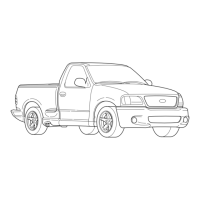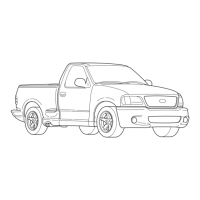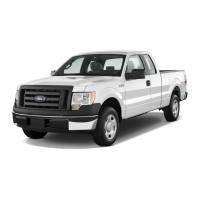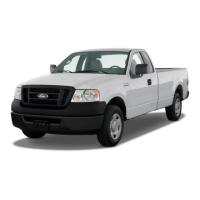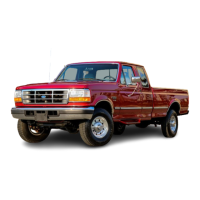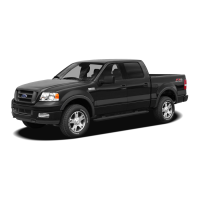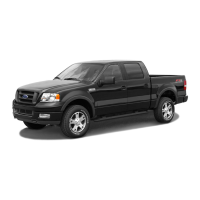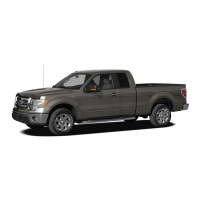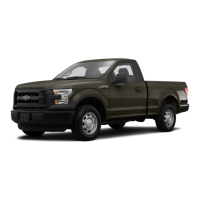Before operating your vehicle at higher
than normal speeds:
• Make sure your tires are at the correct
tire pressure. See Tire Care (page 26).
• Inspect wheels and tires for wear and
damage. Replace any damaged wheels
or tires.
• Never operate the vehicle at higher
than normal speeds when loaded with
passengers/cargo.
Driving in Mud
• Deep mud should be approached with
caution especially if you are driving in
an unfamiliar area.
• If possible, test the depth of a mud hole
before entering with the vehicle.
• Keep in mind that obstacles and deep
ruts may be hidden beneath the
surface of the mud.
• Proceed in a steady, controlled manner
through deep mud while maintaining
momentum.
• If momentum is lost and you feel the
vehicle becoming stuck, turning the
steering wheel back and forth (sawing
the wheel) quarter turn in each
direction may give the traction you
need to clear the muddy area.
• In higher speed areas with shallow
mud, directional control will be reduced
in the muddy area much like on snow
or ice. When approaching such an area,
be sure to slow to a speed which
allows you to maneuver as required by
the conditions.
Driving in Sand
WARNING
Tires must be returned to normal
recommended tire pressures before
driving on pavement or hard
surfaces. Failure to properly maintain your
tire pressure could increase the risk of tire
failure, loss of control, vehicle rollover and
personal injury.
Soft sand and dunes present a very unique
driving challenge. Before going on such a
drive, some research is advised regarding
proven techniques and pitfalls inherent in
driving in deep sand.
Some general points to consider:
• It is very difficult and in many cases
impossible to navigate deep sand with
tire pressures which are appropriate for
on-road driving. If you decide to air
down your tires, be advised that the tire
pressure monitoring light will
illuminate. The tires must be returned
to normal recommended tire pressures
before driving on pavement or hard
surfaces.
• Lower tire pressures are more likely to
cause a debeading of the tire during
cornering. Avoid sharp or abrupt turns
when you have extremely low tire
pressures.
• To help prevent becoming stuck in
deep sand, avoid spinning the tires or
making abrupt maneuvers. Proceed in
a controlled manner while maintaining
vehicle momentum.
• Avoid stopping or parking on inclines
as this makes it more difficult to
resume driving.
20
F150 (TF6)
Driving Hints
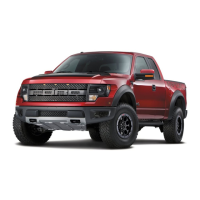
